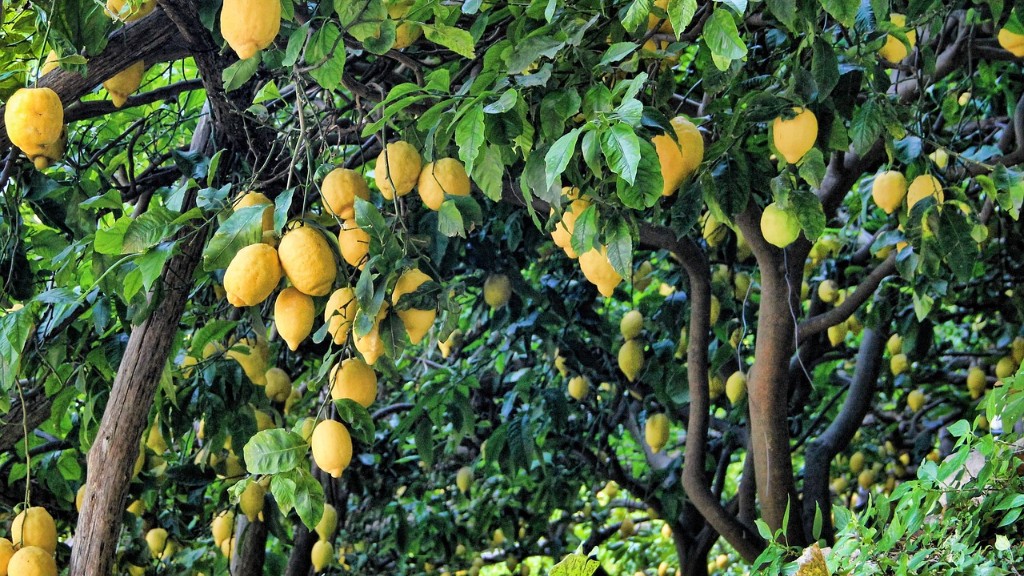When thinking about when to bring a lemon tree inside, a few key factors come into play. First, the location of the tree. If you live in a region where winter temperatures drop well below freezing, it’s smart to bring the tree inside before winter. This can be done from late September to early October. In areas with milder winters, lemon trees can stay outside all year round, but will still benefit from occasional protection from the cold during times when temperatures dip below 45°F. Next, the age of the tree is important. Younger trees will never be able to tolerate temperatures below 45°F, so it’s best to bring them inside for the winter; however, mature trees can survive temperatures as low as 25°F, and only need to be brought inside when temperatures are expected to stay that low for several days.
To bring a lemon tree indoors, you’ll need to prepare the tree first. Give the soil a light watering, remove any dead or decaying leaves, and if necessary, prune away any dead branches or twigs. Next, carefully lift the tree out of the ground or container and wrap the root ball in burlap or a garbage bag to protect it. After that, place the tree in a semi-shaded area outside and let it acclimate to the difference in temperature for a few weeks, bringing it indoors if the temperature drops suddenly or if frost is expected. Finally, pot the tree in a container with drainage holes, fill the bottom with a layer of pebbles, and place the tree inside for the duration of winter.
Watering Requirements
One of the most important aspects of caring for a lemon tree indoors is creating the proper watering schedule. The soil should be kept damp, not wet – overwatering can quickly lead to root rot. The frequency of watering will depend on the type of soil, the container, and the temperature of the room. For instance, during cold winter months when the thermostat is set low, the soil will take longer to dry and the tree may need to be watered less frequently. Conversely, during warmer times of the year (when the temperature is above 70°F), the soil can dry out quickly, and you may need to water your tree more often.
Fertilizing Requirements
Lemon trees will benefit from occasional fertilizer applications, but avoid over-fertilizing, especially during the winter, when the tree does not actively grow and does not require as much nutrient uptake. The ideal solution is to use a fertilizer specially formulated for citrus plants. Apply it as directed, usually once or twice a year, ensuring that the fertilizer doesn’t come into contact with the tree’s leaves or foliage. If your tree shows any signs of nutrient deficiency, such as yellowing leaves, you can also supplement with a liquid fertilizer.
Pruning Requirements
Pruning a lemon tree correctly is important for its health and vigor. Pruning can help the tree to grow thicker, bushier foliage and promote better air circulation, both indoors and outdoors. Prune away any dead or damaged branches in the late summer or early fall. Also prune away any twigs or branches that are crossing, as these can crowd the tree and cause irreversible damage. If your tree is too tall for your home, prune away at the top of the branches, shortening it in increments. Indoor trees should not be pruned back more than 25 percent.
Light Requirements
Lemon trees need bright light to thrive. When grown indoors, place the tree in an area that gets plenty of direct sunlight – 6-8 hours per day is optimal. If it is not possible to position the tree near a sunny window, supplement with grow lights. You may also need to rotate the tree every few days so that all sides get an equal amount of light.
pest prevention
Lemon trees can suffer from a variety of pests, including mites, aphids, and whiteflies. The best way to prevent pests is to regularly spray the tree with a pesticide, or use a commercially available pesticide specifically designed for lemon trees. To avoid the risk of pesticide residue, use a soft cloth or brush to remove any pests from the leaves and branches of the tree.
disease prevention
Lemon trees can also be vulnerable to a variety of diseases, such as root rot, black sooty mold, and citrus canker. To avoid any disease problems, keep the lemon tree in a location where it can get plenty of sunlight and air circulation. As with pests, it’s best to use a commercially available spray, specifically designed for citrus trees, to prevent any problems.
Transporting
When transporting a lemon tree, be sure to take extra precautions. First, provide some protection for the leaves and foliage by wrapping it in a light fabric or cloth. Next, place the root ball in a large container, such as a burlap or garbage bag, and seal it securely. Last, secure the tree in the transport container so that it won’t move around during travel. When you arrive at your destination, keep the tree in the bag and in a cool, shaded area until it’s time to move it into its final home.


